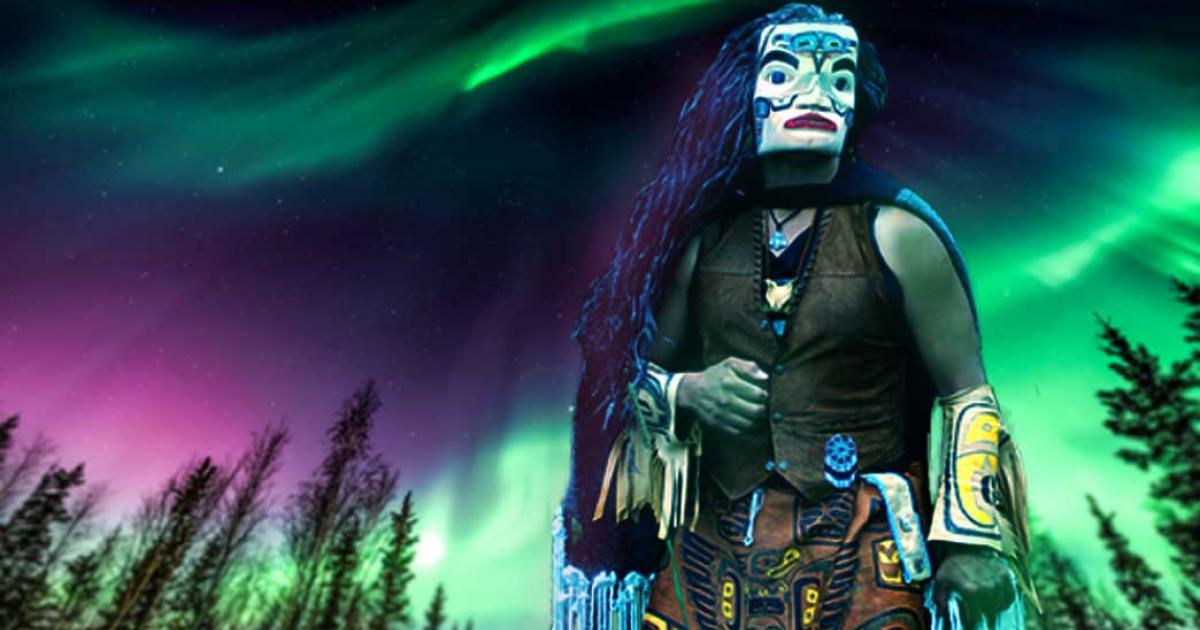
The Supernatural Traditions of the Alaskan Shaman
When the word ‘shaman’ is mentioned, it is common for one to visualize semi-naked cat-skin clad witchdoctors, wheeling around fires in mild southern climates. Less often does one picture holy men wearing seal skins with bear fur boots, fighting frost spirits in northern polar landscapes. The opaque persona of ancient Alaskan shamans have secretive supernatural arts worth investigating, for they are rapidly disappearing into oblivion.

Yup'ik medicine man exorcising evil spirits from a sick boy. Nushagak, Alaska, (1890s) (Public Domain)
In ancient Alaska people’s world views were stitched together with beliefs, myths, rituals and ceremonies relating to the most prevalent wildlife in any given area. In this animistic world, animals were given complex personalities and characteristics and shamans believed they could communicate with animal spirits and acted as community conduits between this world, and many others.
Traditional Alaskan Native religion included mediation between people, spirits, souls and immortal energies and beings, but by the end of the 19th century, Sagdloq, the last traditional Alaskan medicine man had died and so vanished his secrets, which scholars list as including: “ventriloquism, sleight-of-hand, how to travel to the sky and beneath the sea."
Most Alaskan Native cultures had spiritual leaders who mediated between humans, spirits and the community and Inuit cultures called this person the angakkuq (translated as ‘shaman’ in Russian and English literature). Similarities between the shamanism practiced by the tribes of north-eastern Asia and Alaska can be drawn, for example; shamans in both continents believed they released the souls of deceased animals to enhance the people’s success in hunting. Also, both attempted to cure the sick by bringing back their cleansed, stolen souls from etheric realms. Non- angakkuq could experience spiritual hallucinations and visions and almost every Alaskan Native claims to have memories of ghost animals, humans and ‘little people living in remote places’. Hearing voices from ice sheets or stones were discussed as everyday occurrences.

Angakkuq as depicted in the Dictionnaire Infernal, 1863 edition. (Public Domain).
To broaden the understanding of the spectrum of shamanism in ancient Alaska, it is necessary to closely inspect the supernatural beliefs and practices of predominant peoples who inhabited different parts of that landmass. It is a fact that when animal species change within an Alaskan landscape, so does the shamanism, as they are two ends of the same piece of string.
Like this Preview and want to read on? You can! JOIN US THERE ( with easy, instant access ) and see what you’re missing!! All Premium articles are available in full, with immediate access.
For the price of a cup of coffee, you get this and all the other great benefits at Ancient Origins Premium. And - each time you support AO Premium, you support independent thought and writing.
Ashley Cowie is a Scottish historian, author and documentary filmmaker presenting original perspectives on historical problems, in accessible and exciting ways. His books, articles and television shows explore lost cultures and kingdoms, ancient crafts and artifacts, symbols and architecture, myths and legends telling thought-provoking stories which together offer insights into our shared social history. www.ashleycowie.com.
Top Image: Tlingit Indian by Cenk Unver (Fotolia) and Alaskan background (Fotolia) Deriv: Liz Leafloor
By Ashley Cowie















